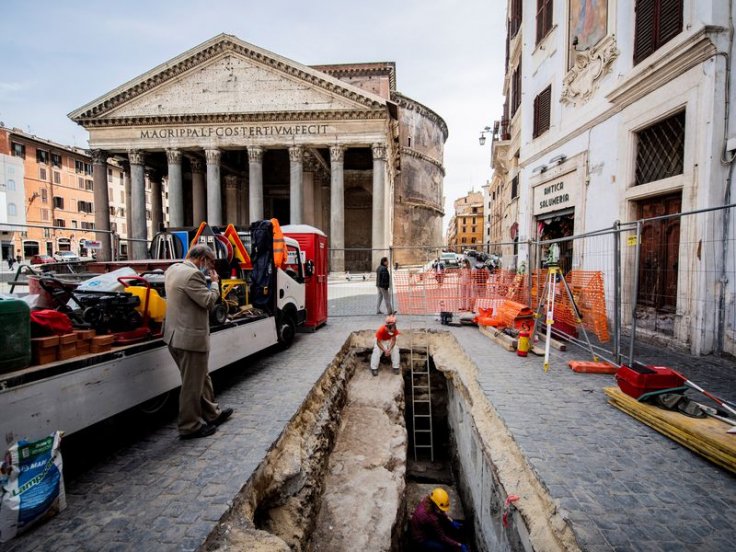Ancient paving stones, dating back to 27 BC were found after a giant sinkhole opened in front of the Pantheon, a former Roman temple, in Rome. The eight-foot deep and 10-foot long sinkhole, which opened suddenly, is located near the front steps of the Roman temple.
Since the area was closed to the public, no injuries were reported. Deemed to be a common occurrence in Rome, the city has recovered more than 100 sinkhole openings recorded last year. In 2018, the number was 175.
Paving Stones Were Part of the Ancient Street

The incident took place on the cobblestoned street in the Piazza della Rotunda, near the Pantheon's front steps. The Officials uncovered seven slabs of travertine, a kind of sedimentary rock, dating back to between 27 and 25 BC. In a report, Agenzia Nazionale Stampa Associata (ANSA), stated that the stones were probably part of the paving placed when statesman Marcus Agrippa, deputy to Rome's first emperor, Augustus, oversaw the temple's initial construction.
The stones were first discovered by the local authorities while laying the service lines in the 1990s. 'Rather than excavating the artifacts, officials opted to leave them underground, where they have remained ever since,' the publication stated.
In a statement issued to ANSA, Rome special superintendent Daniela Porro said: "More than twenty years after this initial find, the ancient pavement has emerged intact, protected by a layer of fine pozzolan—a material that acts much like cement when exposed to moisture. This is further evidence of Rome's inestimable archaeological riches."
Rome Remains Prone to Sinkholes
For a long time now, Rome has remained prone to sinkholes. To reduce the number of sinkholes occurrences in and around the city, the authorities had announced a project in 2018. Sinkholes are caused by the destabilizing combination of the region's sandy soil and layers of old ruins that much of the modern city was built atop, which weaken the ground above.
Geologist Stefania Nisio told Adnkronos: "The most sensitive area is eastern Rome, where materials were quarried in ancient times. The main cause of a sinkhole in the city is the presence of an underground cavity."
The site of the Pantheon, the most sought-after Roman site, attracts a large number of tourists every year. The Pantheon, which means 'to every god', was constructed as a temple, to all the gods of Ancient Rome. It was built on top of an earlier temple from the reign of Augustus in as far back as 27BC. Emperor Hadrian rebuilt it in about 126 AD. Being in regular use, the Pantheon had been used as a Roman Catholic church since the 7th century.








